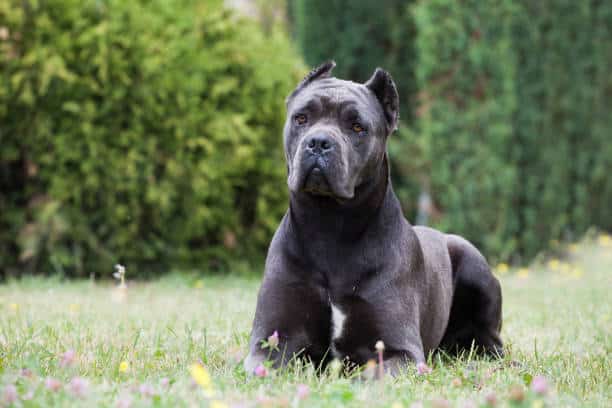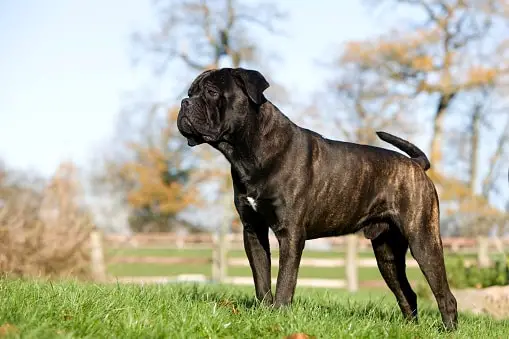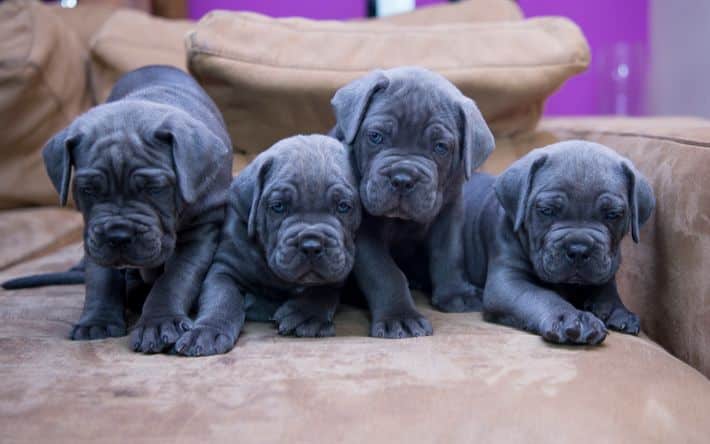Table of Contents
Cane Corso colors are an important consideration when it comes to selecting the perfect companion. With their striking, distinctive looks and wide range of color varieties, this breed has become increasingly popular over the years.
But what exactly do we know about cane corso colors? How does genetics play a role in determining their coat shades? And how can these variations affect your Cane Corso’s health and wellbeing?
In this blog post, we will explore all things related to cane corso colors – from understanding its genetic basis to showing off your pup at conformation events. So if you’re looking for more information on this topic or just curious about how different hues may impact your pet’s life – keep reading!
Table of Contents:
- Overview of Cane Corso Colors
- Understanding the Genetics of Cane Corso Colors
- Health Implications of Different Cane Corso Colors
- Showing Your Cane Corso in Conformation Events
- FAQs in Relation to Cane Corso Colors
- Conclusion
Overview of Cane Corso Colors
The Cane Corso is a large and powerful breed of dog that originated in Italy. This breed has been around for centuries, but it was not until the late 1980s that they began to be recognized as an official breed.
The Cane Corso is known for its loyalty, intelligence, and strength. They are also known for their unique color variations which can range from solid black or white to more exotic colors such as brindle or blue.
History and Origin
The Cane Corso is believed to have descended from ancient Roman Molosser dogs used by farmers and shepherds during the Middle Ages. These dogs were bred with other breeds such as Mastiffs and Bulldogs in order to create a larger, stronger working dog capable of herding livestock and protecting property.
Over time, these dogs became popular throughout Italy where they were used primarily as guard dogs due to their size and strength. Today, the Cane Corso is still used as a guard dog but also makes an excellent family pet due to its loyal nature and protective instincts towards its owners.
Common Color Variations
The most common color variation seen in the Cane Corso is black or fawn (light brown). Other common colors include red/brown brindle (striped pattern), gray/blue brindle (striped pattern), white/gray merle (spotted pattern) ,and sable (mixture of light browns).
All of these colors may be present with various markings on their faces such as spots or patches on their heads or bodies. Some individuals may even have small amounts of white fur scattered throughout their coats which adds character to this already stunning breed.
Rare Color Variations
Here are some of the rare color variations of the Cane Corso breed:
- Black Brindle
- Blue
- Fawn
- Formentino (Lilac)
- Red Brindle
- Tawny
- Black
- Gray
Note: It’s worth noting that the breed standard recognizes only black, blue, fawn, and brindle as acceptable colors. Any other color variations are not considered standard and may not be recognized by breed organizations

Understanding the Genetics of Cane Corso Colors
They come in a variety of colors and patterns, from the traditional black or gray to rarer shades like blue or brindle. Understanding the genetics behind these color variations can help you make informed decisions when breeding your Cane Corso.
Genes Responsible for Coloration: The primary gene responsible for coloration in dogs is called melanocortin 1 receptor (MC1R). This gene controls the production of two types of pigment molecules: eumelanin (black) and pheomelanin (red/yellow).
Variations in this gene determine which type and how much pigment will be produced by each individual dog.
Inheritance Patterns: The inheritance pattern for MC1R is complex because it involves multiple genes interacting with one another. Generally speaking, dominant alleles are more likely to be expressed than recessive ones; however, there are exceptions to this rule depending on other factors such as environmental influences or genetic modifiers.
For example, two copies of a black allele may not produce an entirely black coat if there are other genes present that modify its expression.
When considering breeding two Cane Corsos together, it is important to understand their genotypes—the combination of alleles they possess at each locus—and how those might affect their offspring’s phenotype—the physical characteristics expressed by those alleles.
By understanding the genetics behind coloration in Cane Corsos, one can better predict what colors their puppies may have before they are born and make sure there are no unexpected surprises.
Health Implications of Different Cane Corso Colors
The color of a Cane Corso’s coat can have implications for their health. Skin pigmentation, coat length, and eye color all play a role in how the breed is affected by sun exposure, temperature regulation, and vision issues.
Skin Pigmentation and Sun Exposure: The amount of skin pigment present on a Cane Corso’s body can affect its sensitivity to sunlight. Dogs with lighter colored coats are more prone to sunburn than those with darker fur.
This is especially true for white-coated dogs who may require sunscreen when outdoors during peak hours of sunlight or need to be kept out of direct sunlight altogether.
Coat Length and Temperature Regulation: Longer coated Cane Corsos tend to fare better in cold weather than short-haired varieties as they retain heat better due to their thicker fur. On the other hand, long-haired breeds may overheat more easily in hot climates because their thick coats don’t allow air circulation as well as shorter ones do.
It’s important that owners monitor their pet’s temperature when outside in extreme temperatures regardless of coat length or coloration.
Eye color can also influence canine vision problems such as progressive retinal atrophy (PRA). PRA is an inherited condition that affects night vision first before progressing into day blindness if left untreated.
Blue eyes are particularly at risk for this disorder, so it is important that owners take extra precautions when caring for blue-eyed Cane Corsos, such as avoiding stairs or dimly lit areas where falls could occur due to impaired sight during nighttime hours.

Showing Your Cane Corso in Conformation Events
Showing your Cane Corso in conformation events is a great way to showcase the beauty and elegance of this breed. It’s important to understand the breed standards for coloration when entering these competitions, as well as how to work with professional handlers and judges.
With proper preparation, you can ensure that your dog has the best chance of success in the show ring.
Breed Standards for Coloration: The American Kennel Club (AKC) recognizes five colors for Cane Corsos: black, fawn, red brindle, mahogany brindle and tigrato. All shades must be clear and solid without any patches or fading on the body or head.
White markings are allowed on chest, toes and chin but should not exceed 1/3 of the entire coat area. A white blaze between eyes is also acceptable but no other white markings are permitted according to AKC standards.
Working with Professional Handlers and Judges: Working with professional handlers can help you get ready for conformation shows by teaching you how to properly groom your dog before entering into competition as well as helping you learn how to present your dog in front of a judge during judging time at an event.
Professional handlers will also be able to provide advice on which shows may be best suited for your particular Cane Corso based on their experience working with similar breeds over many years in various events across different countries around the world.
FAQs in Relation to Cane Corso Colors
What is the rarest Cane Corso color?
The rarest color for a Cane Corso is blue. This coat color is caused by a recessive gene, meaning both parents must carry the gene in order to produce this unique shade of gray-blue. Blue Cane Corsos have an even distribution of black and gray throughout their coats, with no tan or white markings present.
The breed standard does not recognize any other colors besides fawn and black as acceptable for show dogs, so blue Cane Corsos are often considered rarer than those that conform to the breed standard.
How many colors of Cane Corso are there?
There are eight recognized colors of Cane Corso: black, gray, red, mahogany, brindle, fawn (also known as yellow or isabella), and tan. The eighth color is a combination of two or more of the above colors.
All Cane Corsos have a black mask on their face regardless of coat color. Some may also have white markings on their chest and toes. Generally speaking, all eight colors are accepted in the breed standard for show purposes.
Is there a tri color Cane Corso?
Yes, there is a tri color Cane Corso. The breed is known for its unique three-color coat pattern, which includes black, tan and white. This combination of colors can vary from dog to dog but the overall look remains the same.
The Cane Corso also has a short and glossy coat that requires minimal grooming. They are an active breed with strong protective instincts making them great guard dogs as well as loyal companions.
How can you tell a real Cane Corso?
A Cane Corso is a large, muscular breed of dog that originated in Italy. To identify a real Cane Corso, look for certain physical characteristics such as a short muzzle with an undershot jaw, ears that are cropped close to the head and eyes that are almond-shaped and dark brown in color.
Additionally, their coat should be short and thick with colors ranging from black to gray or fawn. Finally, they should have strong hindquarters and well-muscled legs which give them an athletic appearance. With these traits combined, you can confidently tell if your pet is indeed a true Cane Corso.
Conclusion
Understanding the genetics of these colors can help you make informed decisions about your pet’s health and appearance. Showing your Cane Corso in conformation events can be a great way to showcase their unique colorings, but it is important to remember that all Cane Corsos are valued regardless of their color or markings.
No matter what cane corso colors you choose, they will always be an amazing companion for years to come!
A Cane Corso is a large, muscular breed of dog that originated in Italy. To identify a real Cane Corso, look for certain physical characteristics such as a short muzzle with an undershot jaw, ears that are cropped close to the head and eyes that are almond-shaped and dark brown in color. Additionally, their coat should be short and thick with colors ranging from black to gray or fawn. Finally, they should have strong hindquarters and well-muscled legs which give them an athletic appearance. With these traits combined, you can confidently tell if your pet is indeed a true Cane Corso.<\/span><\/p> A Cane Corso is a large, muscular breed of dog that originated in Italy. To identify a real Cane Corso, look for certain physical characteristics such as a short muzzle with an undershot jaw, ears that are cropped close to the head and eyes that are almond-shaped and dark brown in color. Additionally, their coat should be short and thick with colors ranging from black to gray or fawn. Finally, they should have strong hindquarters and well-muscled legs which give them an athletic appearance. With these traits combined, you can confidently tell if your pet is indeed a true Cane Corso.<\/span> "}}]}
